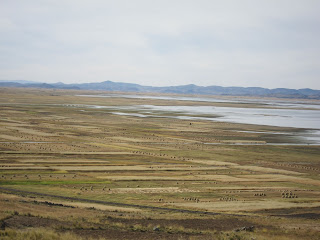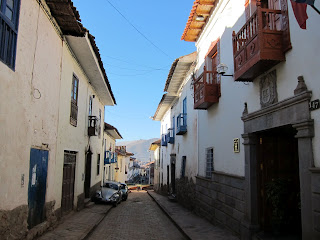(English version below)
“Zu Anfang erscheint die Kunst des Puzzles als eine Schmalspurkunst, eine Kleinkunst, gänzlich in einer dürftigen Lehre der Gestalttheorie enthalten: die ins Auge gefaßte Sache – ob es sich um einen Akt der Wahrnehmung, einen ersten Versuch, ein physiologisches System oder in dem uns interessierenden Fall um ein Holzpuzzle handelt, ist keine Summe von Elementen, die man zuerst einmal aussondern und analysieren müßte, sondern eine Gesamtheit, das heißt eine Form, eine Struktur: das Element existiert nicht vor dem Ganzen, es ist weder gleichzeitiger noch älter, es sind nicht die Elemente, die das Ganze bestimmen, sondern das Ganze bestimmt die Elemente: die Kenntnis des Ganzen und seiner Gesetze, der Gesamtheit und ihrer Struktur könnte nicht aus der gesonderten Kenntnis der sie zusammensetzenden Teile abgeleitet werden: das heißt, daß man den Baustein eines Puzzles drei Tage lang ansehen und glauben kann, alles über seine Konfiguration und seine Farbe zu wissen, ohne auch nur im entferntesten weitergekommen zu sein: was zählt, ist allein die Möglichkeit, diesen Baustein mit anderen Bausteinen zu verbinden, und in dieser Hinsicht besteht eine gewisse Gemeinsamkeit zwischen der Kunst des Puzzles und der Kunst des Go; nur die zusammengefügten Teile erlangen die Eigenschaft der Lesbarkeit, bekommen einen Sinn: einzeln betrachtet hat der Baustein eines Puzzles keine Bedeutung; er ist nur eine unmögliche Frage, eine undurchsichtige Herausforderung; doch kaum ist es einem gelungen, ihn nach einigen Minuten der Versuche und der Irrtümer oder in einer ungewöhnlich inspirierten Halbminute mit einem seiner Nachbarn zu verbinden, verschwindet der Baustein, hört auf, als Baustein oder Einzelteil zu existieren: die gewaltige Schwierigkeit, die diesem Zusammenrücken vorausgegangen ist und die das Wort Puzzle – Rätsel – auf Englisch so treffend kennzeichnet, hat nicht nur keine Daseinsberichtigung mehr, sondern scheint nie eine gehabt zu haben, so sehr ist sie Selbstverständlichkeit geworden, die nun ebenfalls Ursache für Irrtum, Zögern, Verwirrung und Hoffen ist."
"To begin with, the art of jigsaw puzzles seems of little substance, easily exhausted, wholly dealt with by a basic introduction to Gestalt: the perceived object — we may be dealing with a perceptual act, the acquisition of a skill, a physiological system, or, as in the present case, a wooden jigsaw puzzle — is not a sum of elements to be distinguished from each other and analysed discretely, but a pattern, that is to say a form, a structure: the element’s existence does not precede the existence of the whole, it comes neither before nor after it, for the parts do not determine the pattern, but the pattern determines the parts: knowledge of the pattern and of its laws, of the set and its structure, could not possibly be derived from discrete knowledge of the elements that compose it. That means that you can look at a piece of a puzzle for three whole days, you can believe that you know all there is to know about its colouring and shape, and be no further on than when you started. The only thing that counts is the ability to link this piece to other pieces, and in that sense the art of the jigsaw puzzle has something in common with the art of go. The pieces are readable, take on a sense, only when assembled; in isolation, a puzzle piece means nothing — just an impossible question, an opaque challenge. But as soon as you have succeeded, after minutes of trial and error, or after a prodigious half-second flash of inspiration, in fitting it into one of its neighbours, the piece disappears, ceases to exist as a piece. The intense difficulty preceding this link-up — which the English word puzzle indicates so well — not only loses its raison d’être, it seems never to have had any reason, so obvious does the solution appear. The two pieces so miraculously conjoined are henceforth one, which in its turn will be a source of error, hesitation, dismay, and expectation."
“Zu Anfang erscheint die Kunst des Puzzles als eine Schmalspurkunst, eine Kleinkunst, gänzlich in einer dürftigen Lehre der Gestalttheorie enthalten: die ins Auge gefaßte Sache – ob es sich um einen Akt der Wahrnehmung, einen ersten Versuch, ein physiologisches System oder in dem uns interessierenden Fall um ein Holzpuzzle handelt, ist keine Summe von Elementen, die man zuerst einmal aussondern und analysieren müßte, sondern eine Gesamtheit, das heißt eine Form, eine Struktur: das Element existiert nicht vor dem Ganzen, es ist weder gleichzeitiger noch älter, es sind nicht die Elemente, die das Ganze bestimmen, sondern das Ganze bestimmt die Elemente: die Kenntnis des Ganzen und seiner Gesetze, der Gesamtheit und ihrer Struktur könnte nicht aus der gesonderten Kenntnis der sie zusammensetzenden Teile abgeleitet werden: das heißt, daß man den Baustein eines Puzzles drei Tage lang ansehen und glauben kann, alles über seine Konfiguration und seine Farbe zu wissen, ohne auch nur im entferntesten weitergekommen zu sein: was zählt, ist allein die Möglichkeit, diesen Baustein mit anderen Bausteinen zu verbinden, und in dieser Hinsicht besteht eine gewisse Gemeinsamkeit zwischen der Kunst des Puzzles und der Kunst des Go; nur die zusammengefügten Teile erlangen die Eigenschaft der Lesbarkeit, bekommen einen Sinn: einzeln betrachtet hat der Baustein eines Puzzles keine Bedeutung; er ist nur eine unmögliche Frage, eine undurchsichtige Herausforderung; doch kaum ist es einem gelungen, ihn nach einigen Minuten der Versuche und der Irrtümer oder in einer ungewöhnlich inspirierten Halbminute mit einem seiner Nachbarn zu verbinden, verschwindet der Baustein, hört auf, als Baustein oder Einzelteil zu existieren: die gewaltige Schwierigkeit, die diesem Zusammenrücken vorausgegangen ist und die das Wort Puzzle – Rätsel – auf Englisch so treffend kennzeichnet, hat nicht nur keine Daseinsberichtigung mehr, sondern scheint nie eine gehabt zu haben, so sehr ist sie Selbstverständlichkeit geworden, die nun ebenfalls Ursache für Irrtum, Zögern, Verwirrung und Hoffen ist."
(Aus der Einleitung von Georges Perecs Das Leben. Gebrauchsanweisung)
"To begin with, the art of jigsaw puzzles seems of little substance, easily exhausted, wholly dealt with by a basic introduction to Gestalt: the perceived object — we may be dealing with a perceptual act, the acquisition of a skill, a physiological system, or, as in the present case, a wooden jigsaw puzzle — is not a sum of elements to be distinguished from each other and analysed discretely, but a pattern, that is to say a form, a structure: the element’s existence does not precede the existence of the whole, it comes neither before nor after it, for the parts do not determine the pattern, but the pattern determines the parts: knowledge of the pattern and of its laws, of the set and its structure, could not possibly be derived from discrete knowledge of the elements that compose it. That means that you can look at a piece of a puzzle for three whole days, you can believe that you know all there is to know about its colouring and shape, and be no further on than when you started. The only thing that counts is the ability to link this piece to other pieces, and in that sense the art of the jigsaw puzzle has something in common with the art of go. The pieces are readable, take on a sense, only when assembled; in isolation, a puzzle piece means nothing — just an impossible question, an opaque challenge. But as soon as you have succeeded, after minutes of trial and error, or after a prodigious half-second flash of inspiration, in fitting it into one of its neighbours, the piece disappears, ceases to exist as a piece. The intense difficulty preceding this link-up — which the English word puzzle indicates so well — not only loses its raison d’être, it seems never to have had any reason, so obvious does the solution appear. The two pieces so miraculously conjoined are henceforth one, which in its turn will be a source of error, hesitation, dismay, and expectation."
(From the Introduction to George Perec's Life: A User's Manual)

















































